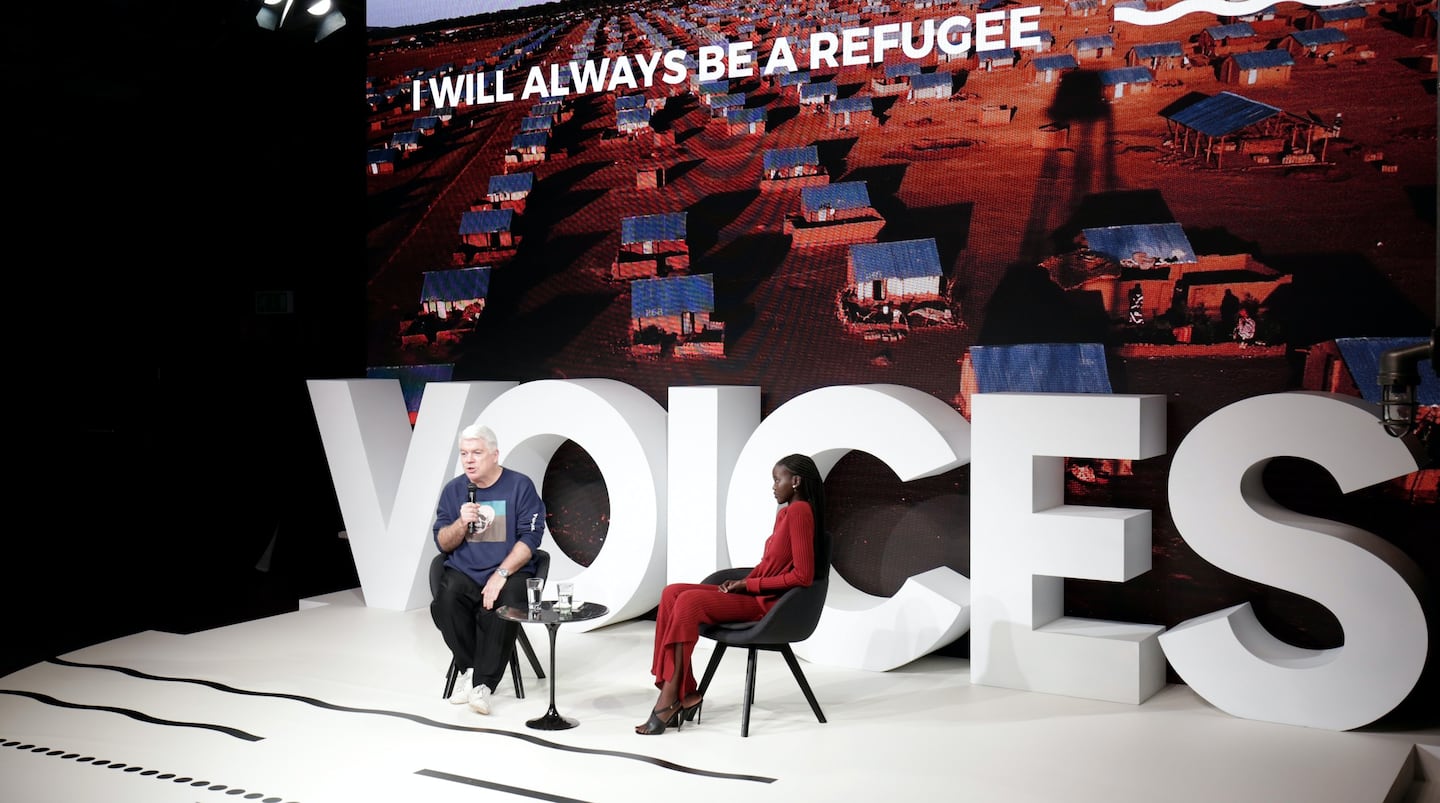
The Business of Fashion
Agenda-setting intelligence, analysis and advice for the global fashion community.

Agenda-setting intelligence, analysis and advice for the global fashion community.

OXFORDSHIRE, United Kingdom — South Sudanese model Adut Akech is one of the industry's fast-rising stars. This month alone, she's covered two international editions of Vogue. She's walked for some of the biggest names in luxury, from Chanel to Dior to Prada. In fact, she arrived onstage at VOICES, BoF's annual gathering for big thinkers in partnership with QIC Global Real Estate, fresh off a plane from Tokyo where she closed Valentino's pre-fall 2019 extravaganza alongside Kaia Gerber in a couture-like frothy red gown.
But Akech grew up worlds away from the glitz and glamour of couture gowns and Vogue cover shoots. The 5'10" model was born while her family was fleeing from war in South Sudan and spent her early years growing up in a Kenyan refugee camp.
"I will always be a refugee, because that's who I am," she told BoF editor-at-large Tim Blanks. "No amount of money or my status or how famous or whatever the case is.... I'm always going to be a refugee and I'm proud of who I am."
Akech’s memories of her childhood during those years are mostly happy ones. “I didn’t know I was in a refugee camp, I had cousins there, I had friends," she said. "Some of the best memories are just running around and playing.”
Nevertheless, she was vaguely aware that something was not quite right.
“As a four year old you don’t really understand what’s going on, but you have a gut feeling… Our families would be packing up and we’d all get in groups and try to stay together. I never bothered to ask what was going on, but I knew something was up.”
When Akech was just six years old, she and her family relocated to Australia. She was excited to attend school, something she wasn’t able to do while living in Kenya.
Her first experience modelling was taking part in a small-scale fashion show put on by her aunt, a designer. That was the moment she knew she wanted to model professionally.
“I just fell in love instantly," she said. "When I’m on the runway, I’m a whole different person."
Akech signed to Chadwick Models in Sydney when she was 16. But it was when Saint Laurent booked her exclusively for its Spring/Summer 2017 show that her career really took off.
Growing up, Akech idolised black models Naomi Campbell and Alek Wek. But now, young girls and boys of colour are looking up to her. "I have people messaging me saying I inspired them to love their black skin, that I inspired them to chase their dreams," she said. "I'm a big believer in chasing dreams."
Akech is proud to be a driving force in the larger industry shift towards increased cultural diversity and inclusion: “I represent black girls, I represent refugees, I represent people that came from nothing and made something of themselves.”
To learn more about VOICES, BoF's annual gathering for big thinkers, visit our VOICES website, where you can find all the details on our invitation-only global gathering, in partnership with QIC Global Real Estate.
From analysis of the global fashion and beauty industries to career and personal advice, BoF’s founder and CEO, Imran Amed, will be answering your questions on Sunday, February 18, 2024 during London Fashion Week.
The State of Fashion 2024 breaks down the 10 themes that will define the industry in the year ahead.
Imran Amed reviews the most important fashion stories of the year and shares his predictions on what this means for the industry in 2024.
After three days of inspiring talks, guests closed out BoF’s gathering for big thinkers with a black tie gala followed by an intimate performance from Rita Ora — guest starring Billy Porter.